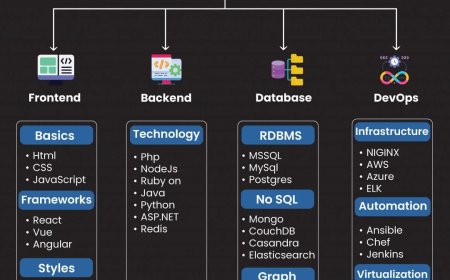Tree Removal: A Complete Guide to Safe and Smart Tree Removal Services
Tree removal isn’t just about getting rid of a tree. It’s a major decision involving safety, cost, legality, and landscape design. Whether you need emergency removal or want to plan for future landscaping, always do it smartly, safely, and with the help of professionals.

Lets face it trees are a vital part of any landscape. But sometimes, no matter how much we love them, theyve got to go. Tree removal is more than just grabbing a chainsaw and going at it. Its a calculated decision that comes with safety concerns, legal issues, and even aesthetic considerations.
Why Tree Removal is Sometimes Necessary
Maybe the trees leaning dangerously close to your house, maybe its rotting from the inside out, or maybe its just in the way of your dream patio. Whatever the reason, tree removal can be the safest and smartest move.
Common Reasons for Removing a Tree
-
Storm damage
-
Disease or pests
-
Construction or landscaping plans
-
Root overgrowth damaging foundations or pipes
-
Safety hazards for people or property
Signs You Need Tree Removal
Visible Tree Damage
Cracks, splits, or large dead branches hanging ominously these are red flags. A damaged tree can fall without warning.
Risk to Property or People
If its hanging over your home, garage, or kids playground, youre playing a risky game.
Disease or Pest Infestation
Fungus growth, hollow trunks, or termites mean the trees health is failing fast.
Tree Removal vs. Tree Trimming
Understanding the Key Differences
Trimming is like giving your tree a haircut its for maintenance. Removal is like saying goodbye forever.
When Trimming is Enough
If your tree is healthy but overgrown or touching power lines, trimming might do the job.
When Full Removal is the Only Option
If the core of the tree is compromised or its beyond saving, removal is the only answer.
Tree Removal Process Explained
Initial Tree Assessment
A certified arborist will check the trees health, structure, and risk level before doing anything drastic.
Required Permits and Regulations
Depending on your city, you might need permission, especially for heritage or protected trees.
Tools and Equipment Used
Chainsaws, wood chippers, cranes, ropes, and safety harnesses are just the basics.
Step-by-Step Tree Removal Process
-
Inspection and planning
-
Branch removal from the top down
-
Trunk sectioning
-
Stump cutting or grinding
-
Cleanup and disposal
Cost of Tree Removal
Factors That Affect Tree Removal Costs
-
Tree size and height
-
Location and accessibility
-
Condition of the tree
-
Emergency or after-hours service
-
Stump removal included or not
Average Price Estimates
-
Small trees: $150$500
-
Medium trees: $500$1,200
-
Large trees: $1,200$2,500+
Tips for Budgeting Tree Removal
-
Get 23 quotes
-
Ask for bundled services
-
Check for city assistance or rebates
Choosing the Right Tree Removal Company
What to Look for in a Tree Service Provider
-
Licensed and insured
-
Certified arborists
-
Positive online reviews
-
Modern equipment
Questions to Ask Before Hiring
-
Do you offer stump removal?
-
Is cleanup included?
-
Can I see proof of insurance?
Red Flags to Watch Out For
-
Vague pricing
-
Lack of references
-
No safety gear used
DIY Tree Removal: Is It Worth the Risk?
Safety Concerns
Falling branches, electric lines, chainsaw mishaps it's not worth losing a limb, literally.
Equipment Costs and Limitations
Renting everything adds up fast. Plus, you need to know how to use it properly.
When to Avoid DIY Tree Cutting
-
Trees over 20 feet
-
Trees near structures or power lines
-
Diseased or unstable trees
Emergency Tree Removal
What Qualifies as an Emergency
-
A tree falls on your house
-
Blocking a road or driveway
-
Threatening to collapse during a storm
Immediate Steps to Take
-
Keep a safe distance
-
Call emergency tree service
-
Document damage for insurance
Who to Call First
Always call a certified tree service not your neighbor with a chainsaw.
Eco-Friendly Tree Disposal Options
Recycling and Reusing Tree Materials
Turn the tree into mulch, lumber, or garden decor.
Donating Firewood or Mulch
Many local farms, community centers, or families appreciate donated wood.
Eco-conscious Tree Removal Services
Look for companies that offer green disposal options.
Tree Removal and Your Landscape
How Tree Removal Impacts Your Yard
Sunlight, soil moisture, and space change instantly.
Landscape Design After Tree Removal
Fill the space with new plants, seating areas, or features like fountains.
Planting New Trees After Removal
Choose native, low-maintenance trees to replace the old ones.
Stump Removal and Aftercare
Why You Shouldnt Ignore the Stump
They attract pests, are trip hazards, and ruin your yards look.
Grinding vs. Excavation
Grinding is quicker and less invasive; excavation is full removal including roots.
Soil Restoration and Replanting
Amend the soil with compost before planting anything new.
Preventive Tree Maintenance
Regular Tree Inspections
Spot trouble early and save money down the road.
Benefits of Tree Pruning
Improves tree health, shape, and longevity.
Monitoring Tree Health
Look for signs of disease, fungus, or stress.
Legal Considerations in Tree Removal
Tree Removal Laws by Region
Each city or county has its own rules. Some even fine you for unauthorized cuts.
Boundary Trees and Neighbor Disputes
Shared trees mean shared responsibility. Always communicate and document.
Protected Tree Species
Some species cant be removed without special permits.
Tree Removal Myths Busted
Trees Cant Fall Unless Its Storming
Wrong. Disease and decay are silent threats.
Any Tree Can Be Removed Anytime
Not true. Legal permits and seasons matter.
DIY Tree Cutting Saves Money
Maybe upfront, but the risks, injuries, or damage can cost way more.
Conclusion
Tree removal isnt just about getting rid of a tree. Its a major decision involving safety, cost, legality, and landscape design. Whether you need emergency removal or want to plan for future landscaping, always do it smartly, safely, and with the help of professionals.
FAQs
1. How long does it take to remove a tree?
It can take anywhere from 1 hour to a full day depending on the trees size and location.
2. Is it cheaper to remove multiple trees at once?
Yes, many companies offer discounts when removing several trees during the same visit.
3. What happens if I dont remove a dying tree?
It can fall unexpectedly, posing danger to property, people, or nearby structures.
4. Will my homeowners insurance cover tree removal?
Only if the tree causes damage due to a covered event like a storm.
5. How do I know if my tree is protected or not?
Check with your local municipality or city arborist for a list of protected species and laws.





































